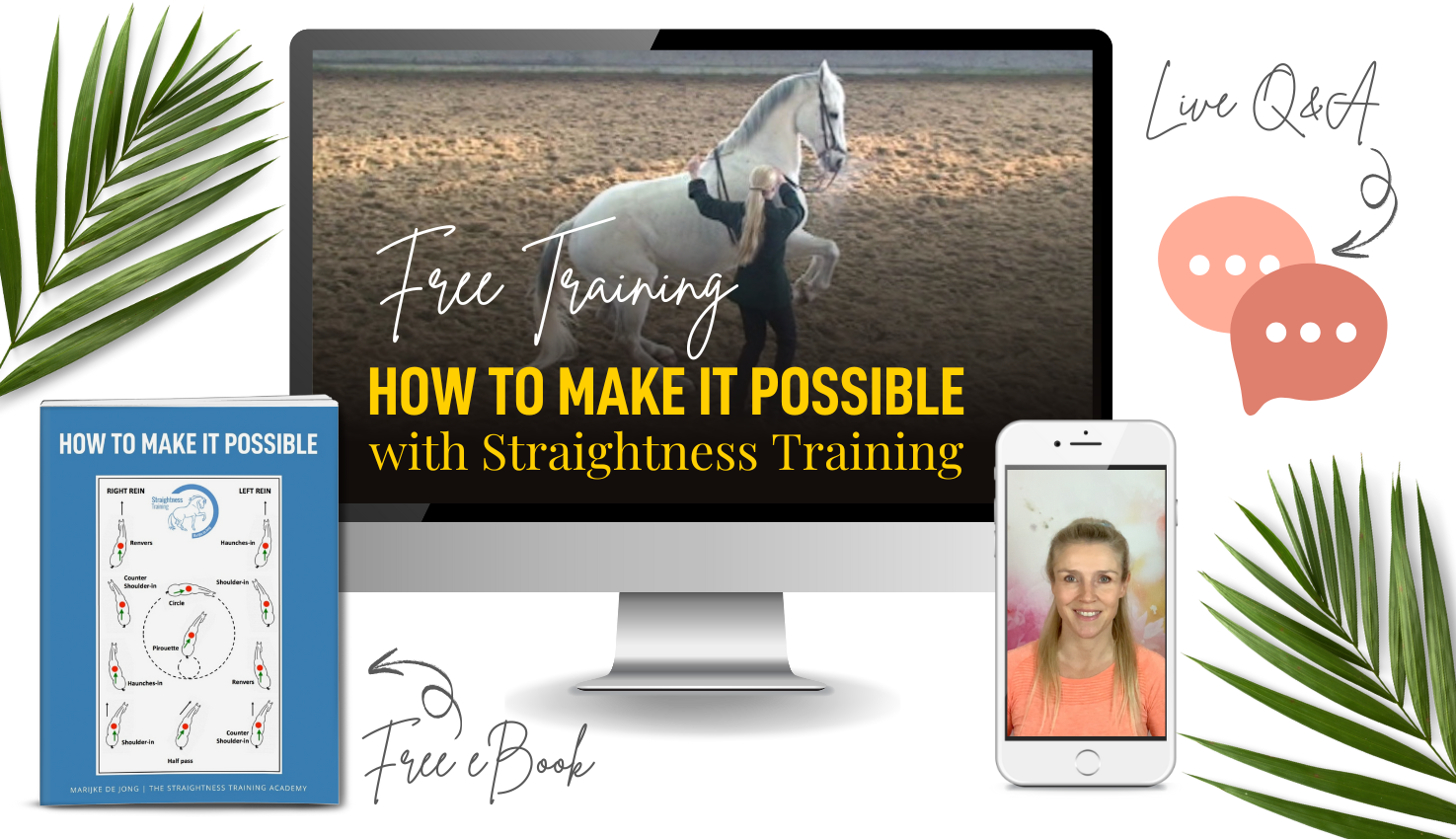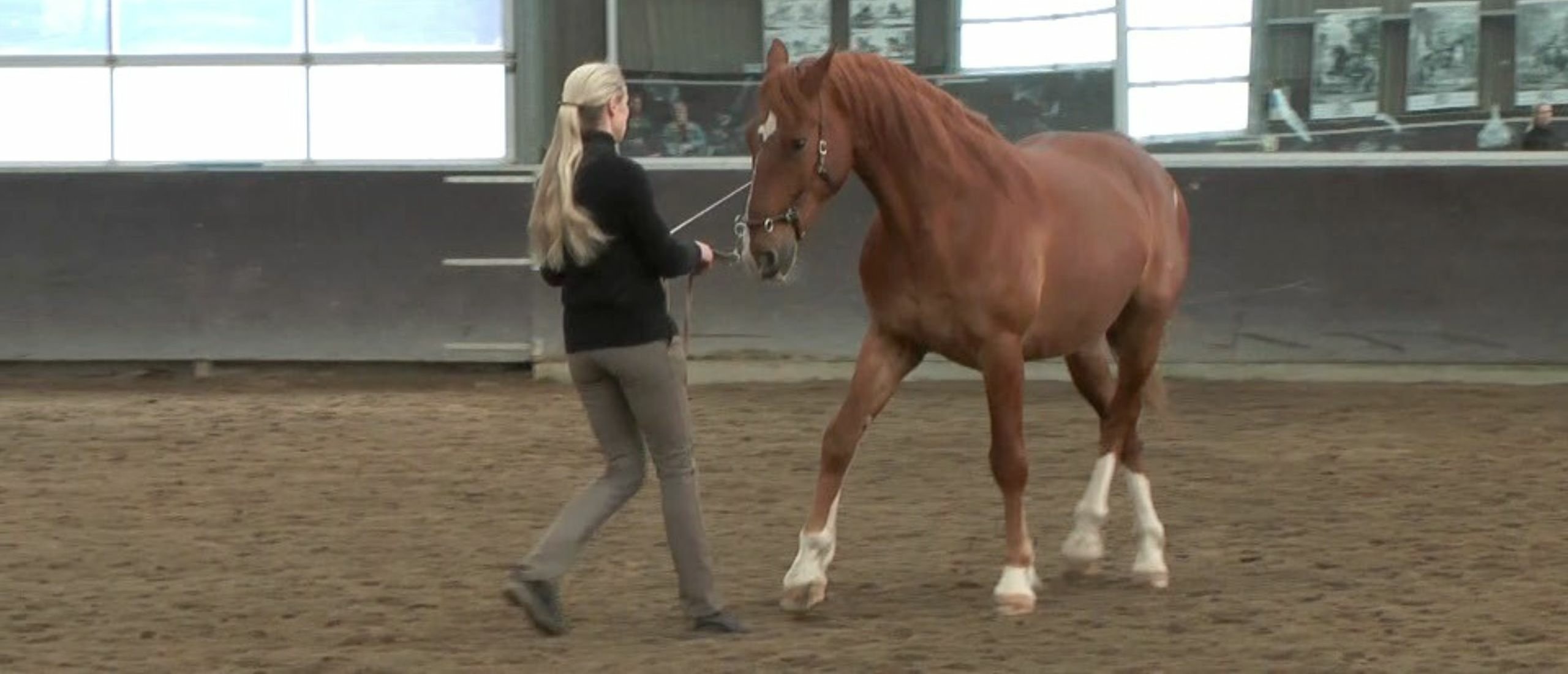
Half pass
Half pass is an important exercise to balance and straightnen your horse.
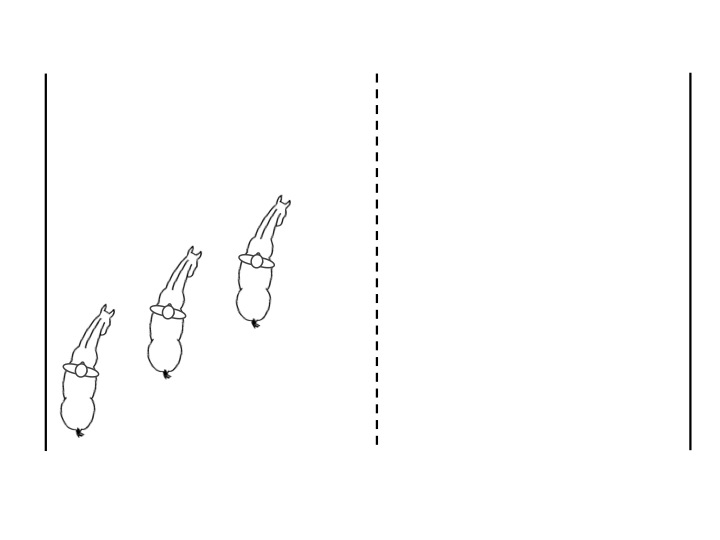
The long-term goal of Straightness Training is achieving flexibility, gaining strength, building muscle, and improving our horse’s overall health. It’s also about maintaining these qualities for a lifetime.
This goal is achieved through a logical system of progressive exercises and the half pass is part of that system.
Definition
When doing a half pass, our horse moves diagonally in lateral bending, in a forward-sideward way, and our horse looks in the direction it is going.
During the half pass, our horse steps under with the inside and outside hind legs alternated. The outside legs cross over the inside legs.

Connection shoulder-in, haunches-in and half-pass
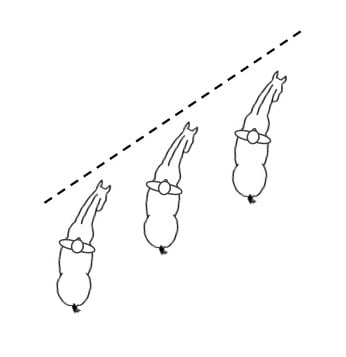
Half pass is a combination of shoulder-in sideways and a haunches-in on the diagonal.
In the half pass, both the inside and the outside hind leg step towards the center of mass.
So doing a half pass is in a way a combination of shoulder-in and haunches-in, except that the exercise is not done along the wall but on the diagonal.
This requires that our horse carries itself, as the wall no longer supports our horse.
Imagine that the wall is on the diagonal and ride haunches-in along that imaginary wall.
This will result in the half-pass.
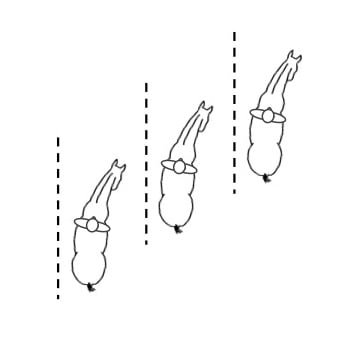
In the half pass, we want to go forward and sideways to develop the hind legs, and both hind legs need to connect with the center of mass in every step. Therefore the shoulders should always lead, meaning they are always in front of the hindquarters. If the shoulders don’t lead the hind legs will step next to the center of mass, which means they won’t take weight.
To test if the shoulders are leading, we should be able to continue on a straight line in shoulder-in every moment of the half-pass. Only then, we are sure our horse has had the right posture and position of the legs during the half-pass.
Also, for horses that still lack some strength and lose their balance quickly, it is recommended to alternate half-pass with shoulder-in on a straight line.
Never lose sight of the essence
When doing the half pass, we should really think of the essence of the exercise:
- that both hind legs step towards and under the center of mass.
If we ‘lose’ a certain leg, or we lose the connection between the center of mass and one of the hind legs, we either correct this with:
- the traversal aids, also called a ‘haunches-in’ correction
- or the versal aids, which is a sort of ‘shoulder-in’ correction.
This means, don’t think in ‘shoulder-in’ or ‘haunches-in’, don’t do the ‘names’, but think about the essence and approach the correction from that space.
Teaching the exercise to your horse
We can only start with the half pass when the exercises shoulder-in and haunches-in are properly taught to the horse.
This means, our horse understands both exercises and is motivated to perform them.
Then we can continue with the half pass.
Half pass is first taught in hand, and then in riding.
In the beginning, a few steps should be enough. When our horse gets stronger, we can progress towards an entire diagonal.
In work in hand, we position ourselves to the outside of our horse, the convex side.
In groundwork, we position ourselves on the inside of our horse, the concave side.
In riding, we guide the horse from above.
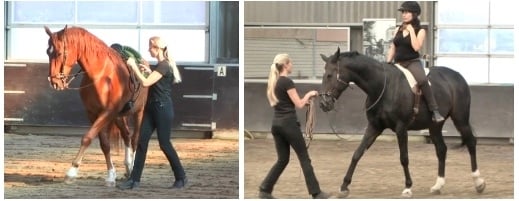
The exercise can be done in walk, trot and finally also in collected canter.
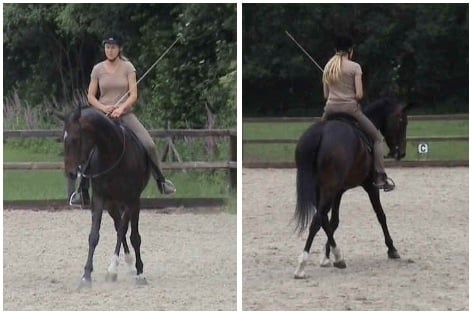
Variations
We can perform the half pass in all five training pillars, in all gaits, and in degrees of extention and collection.
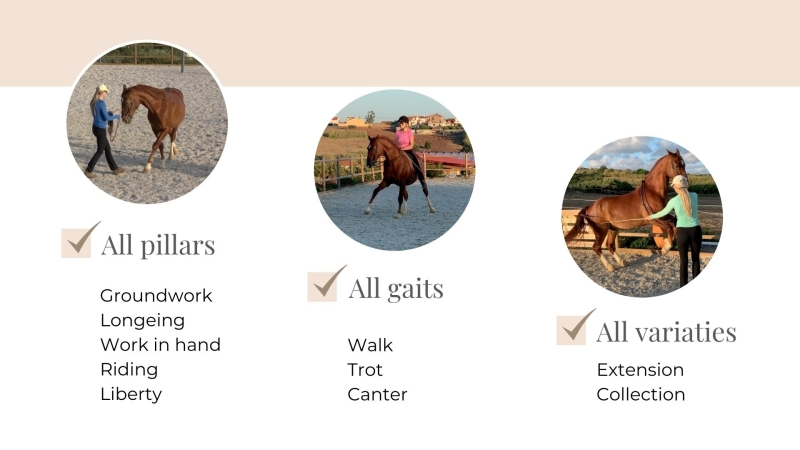
Angle variations
- The ¼ half pass leads to the middle of the short side and the horse is less bended in this exercise. The horse goes more forwards than sideward.
- In the ½ half pass the horse has a similar bending as on a 10 meter circle. The horse goes as much forward as it goes sideward, thus having equal pushing and carrying capacity in his hind legs.
- In the ¾ half pass the horse is more bended and moves to the centre of the long side. The horse goes more sideward than forwards.
- In a complete half pass the horse has maximum bending and steps sideward. A little bit of forwards should be maintained so that the outer legs can continue to step in front of the inside legs.
It is recommended to practice all variations and not to limit yourself to just 1 variation.
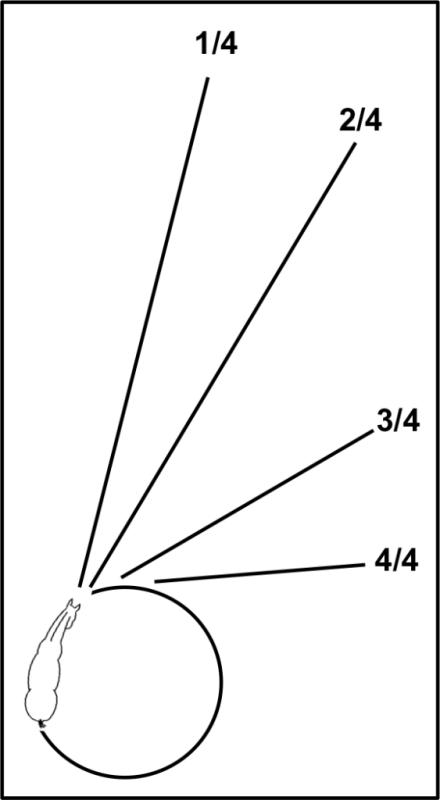
Training Pillars
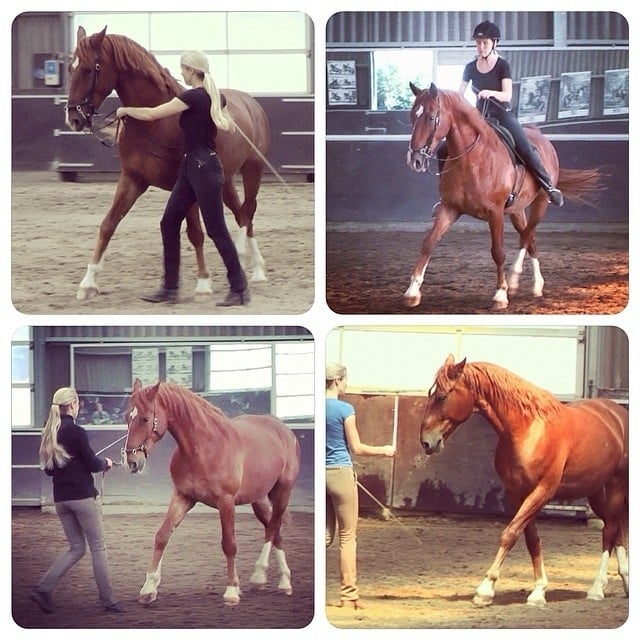
Most of the time, we will let arise the half pass:
- out of the haunches-in circle in groundwork,
- out of the shoulder-in in riding
- out of the shoulder-in in work in hand
In groundwork and riding, we can start both in shoulder-in, and in haunches-in on the circle, and in both situations, we must make sure our horse’s shoulders are leading.
In work in hand, we need to rebend our horse first to the outside, and then, when our horse’s shoulders are leading, we can continue on the diagonal with the half pass.
In work in hand, you can also do it like this:
- make a small circle right before the end of the short side,
- then make a halt when your horse reaches the diagonal,
- move over to the other side and position yourself on the convex side
- then continue in half pass on the diagonal.
Another possiblity in work in hand is:
- make a normal big circle first
- Arriving at X, you can rebend your horse
- continue in a renvers circle (bigger circle) or renvers pirouette (smallest possible circle)
- and out of this renversal exercise, you can continue with half pass on a diagonal
Links to Related and Recommended Articles
- Leg-yield, Yes or No? »
- Lateral Movements »
- Overview ST Exercises »
- 3 Ways To Improve Your Lateral Work »
- 4 Tips on How To Train Lateral Movements »

